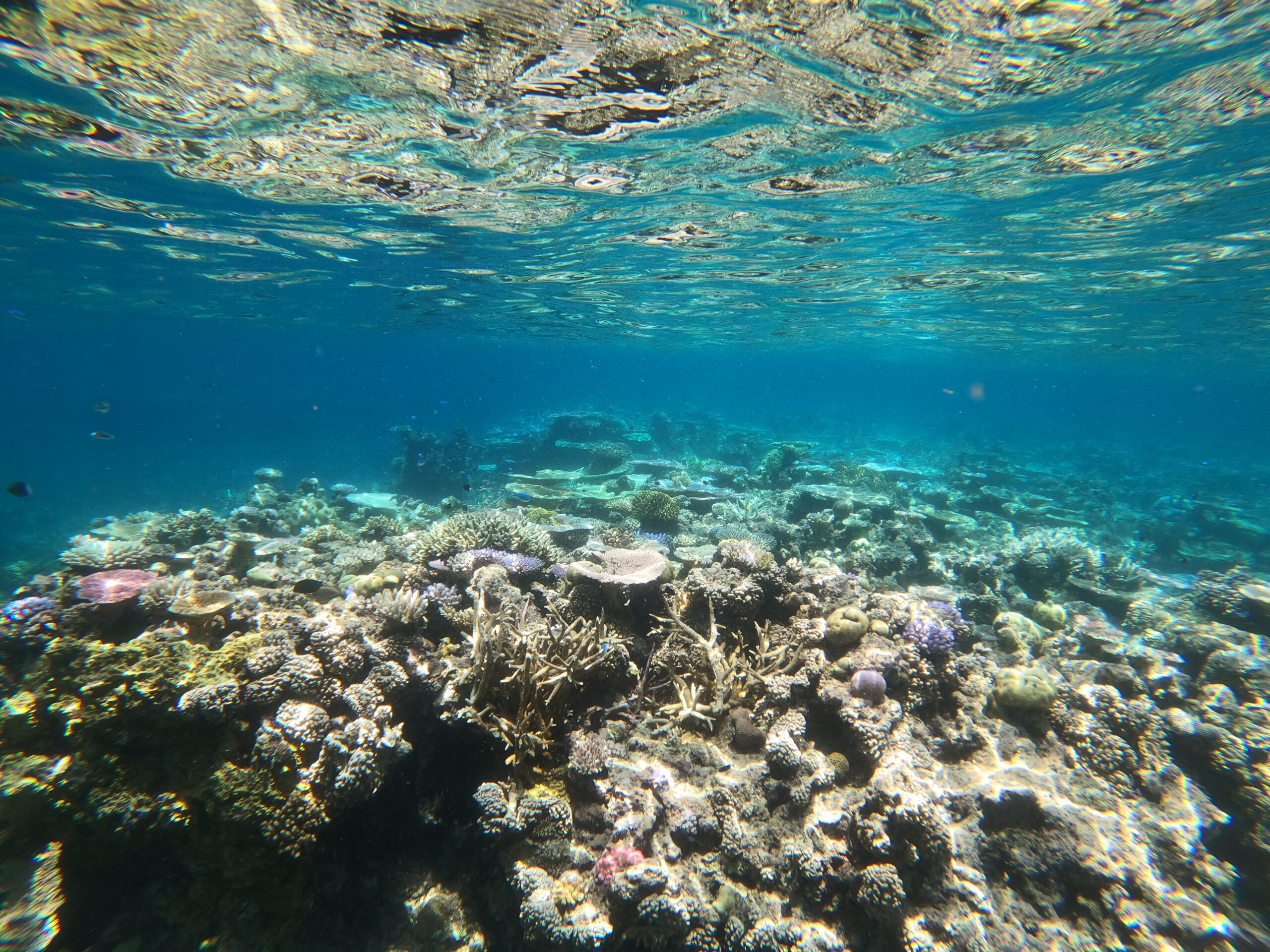Our Australia leg was two parts, too quickly. First, a couple days visiting friends in Sydney, then a few more days in Port Douglas visiting the Great Barrier Reef and Daintree National Park.
Sydney
Sydney is great, full stop. It’s like a warmer, cleaner version of San Francisco that has been overrun by surfer bros instead of tech bros. I prefer the surfer vibe. And of course, what you do and how you do it colors your perspective, so it helped that we crashed with a buddy of mine, spending lots of time with him, and got to go out with a few of Vera’s friends as well, getting the more local experience. But perfect weather, beautiful scenery, and a population straight out of fitness magazines are pretty easy to enjoy even if you don’t have a local connection. My god can the eye feast in Sydney!

Our itinerary was lovely but uninteresting. A hike at Watson’s cove, relaxing at Bondi beach, a ride around the harbor, snorkeling at Manly/Shelley beach, dinners & drinks, etc. We got our first taste of the fascinating underwater world while snorkeling when we saw a giant cuttlefish, strangely unnerving nose fingers and all. The thing was longer than your arm, and with so much surface area, watching it quickly change color to adapt to its surroundings was magical. I think the octopus is one of the coolest creatures in this planet, so seeing a close relative was a treat.
Port Douglas (Great Barrier Reef and Daintree)
From Sydney we headed up to Port Douglas in Queensland which we’d call home base for trips to the Great Barrier Reef and Daintree National Park. Port Douglas isn’t noteworthy except for its “4 Mile Beach” which probably needs no explanation. It’s a bit weird walking along a picture-perfect yet deserted beach, but when you stop and think about it, you remember there are saltwater crocs (salties) and jellyfish (stingers) everywhere and that it’s hot as hell and 75% humidity, and then you realize there are quite a few good reasons there’s no one there.
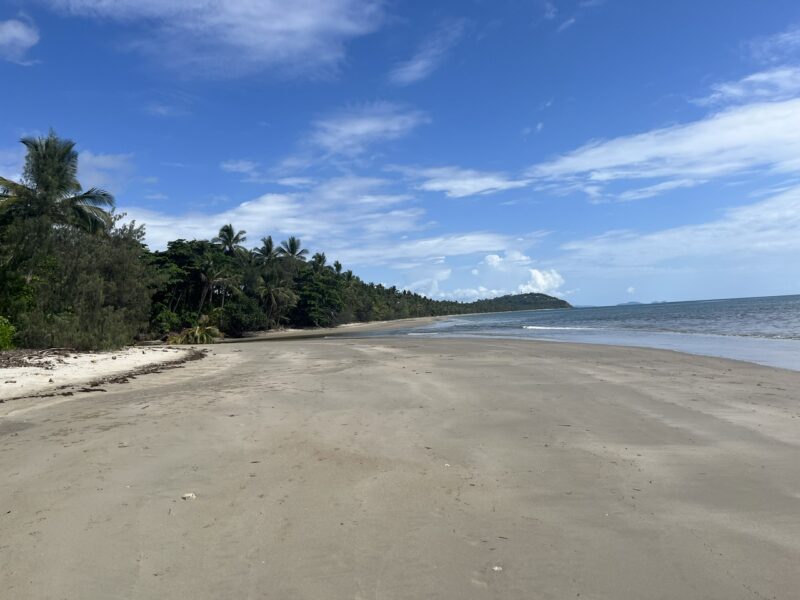
I also went cycling, and I had to laugh at myself as I couldn’t help but imagining crocs in every roadside puddle and snakes in the unmowed grasses. But then I saw some snake roadkill and our guide in the Daintree said that over half of the most venomous snake species in Australia live in the tall grasses and sugar cane fields in the area. And that crocs can be found wherever there is water. So maybe an overactive imagination is a good survival mechanism in Australia, or at least a good counterweight to my typical “the odds of that happening are so low, and plus at least it’d be an interesting story” approach!
Daintree
The park itself was a bit of a letdown, not because it isn’t spectacular, but because the majority of it was closed following damage and flooding caused by a cyclone (Aussie for hurricane) that had sat on the area for six days around Christmas and dumped (according to our guide) between three and four METERS of water in spots. The Daintree river, which can rise three meters with the tides, rose 15 meters. Holy shit. The crazy thing was, apart from some sections of highway which were still washed out, you could hardly tell.
Anyway, we did a half-day tour made for old people (no offense old people) because that was what was on offer. We saw a croc during our leisurely river cruise, and then we went for a rainforest “walk” for about 400 meters which we could have done in flip flops but, to honor Vera’s German roots, we did in hiking boots.
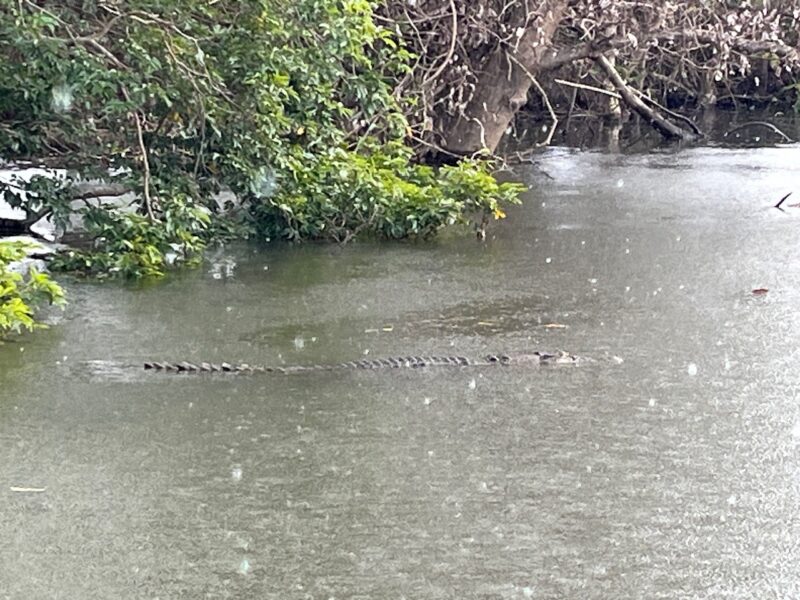
Great Barrier Reef (GBR)
This was the true highlight. Following a tip from friends (thanks Kirk & Steph!), we booked a snorkeling trip to the outer reef. Three spots, one hour each spot. Turns out, that wasn’t nearly enough time. Despite traveling at a pretty intense pace and living constantly with the feeling that we could spend more time in a lot of places, we haven’t really regretted anything this trip. Until now, at least for me. Not spending more time on the reef is one thing I do regret, it was just so spectacular. So, if you go, book a live-aboard and spend a few full days on the reef. You won’t regret it!
One thing you probably didn’t know
Lots of people talk about coral bleaching nowadays. The episodes are becoming more frequent and affecting larger areas. It’s shitty. But what is bleaching exactly, and how bad is it? Well, bleaching is when coral (the structures) expel the algae (their tenants). Generally, they have a perfectly symbiotic relationship. Coral use oxygen like us, basically, converting it to energy to do myriad things, then expelling or exhaling CO2. Algae need CO2 for the photosynthesis process, at the end of which they expel oxygen. One man’s trash is another’s treasure. Beautiful. But like any chemical reaction, when you add heat to the equation, things speed up. Photosynthesis accelerates, the production of oxygen by the algae accelerates, and the corals are flooded with more oxygen than they can handle (we also can’t breathe pure oxygen for extended periods of time), so they kick the hyperactive algae out. Algae are responsible for 100% of the color of the corals, so the corals become white, hence the term bleaching. The coral isn’t dead though, at least not yet. If the water temperature sinks within 2-6 weeks (ish), the coral can survive long enough to let the algae back in. If not, that’s all she wrote. Or is it?
All coral reefs are built up on dead coral. The sites that die from bleaching can and have started to recover, as quickly as a few years after dying. How resilient they are is still a big question, but there is reason to be less pessimistic (not optimistic mind you, that’d require pretty serious levels of detachment from reality). The same coral species are found in waters of all different temperatures. In the southern GBR, the water temps can be in the low to mid 20s, whereas water temperatures can be up to 30-31 degrees in the northern GBR. So despite the same coral species existing in both places, if you took a specimen from the southern GBR and put it in the warmer water up north, it would bleach. What does this tell us? The corals and algae adapt, or the corals adapt by hosting algae that operate “regularly” and not in overdrive at the higher temperatures. So it’s not unreasonable to believe that, as the oceans warm, the corals and algae will adapt in tandem. But the shitty thing is, we’re spitting more and more CO2 into the air, the oceans are warming more quickly than expected, and bleaching events are occurring basically every other year. So by the time the corals have adapted to their new temps, we crank up the heat again.
Back to the snorkeling
So anyway, the snorkeling was awesome. We went to three different spots and were accompanied by multiple marine biologists (hence the bleaching lecture above) who would give both in water and on boat information. The reefs were generally pretty shallow. I think the deepest was maybe 18 meters…

…and the shallowest, was barely a meter deep:
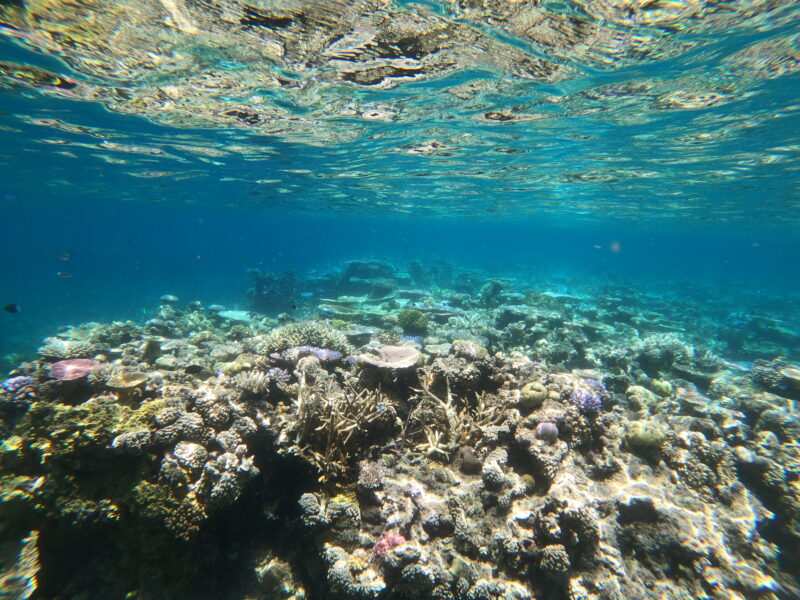
Of the “special” creatures, we only saw a turtle, and not from particularly close up. Still, quite cool. And on top of that, we saw tons of other colorful fish, giant bivalves, all sorts of coral obviously, and even lots of harmless jellyfish (though we did get to wear full-body stinger suits to protect us from the residual stingers just floating in the water).
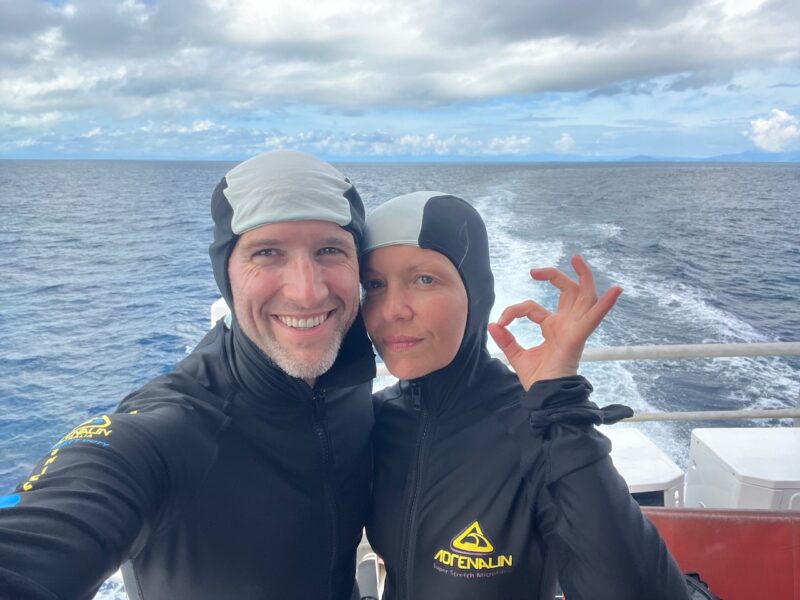
And the universe, apparently wanting to fulfill my subconscious wish to have a close encounter with a dangerous animal, sent me a titan triggerfish. They’re about the length of your arm, so not big but not small, and though they aren’t poisonous, they are aggressive little bastards. I dove down maybe 6-7 meters to get a closer look at one, and its partner came darting out of the shadows to chase me off. Considering these things eat sea urchins and scrape rocks with their teeth, I turned tail and tried to escape asap, cramping in the process, and taking an additional 20 seconds of video which could have been filmed from a tumble dryer and didn’t actually capture the fish as it bit my fin, leaving a bite mark on the hard plastic in the process. Fish 1, Jesse 0. Humbled but amused, I told our guides, thinking they’d get a laugh out of it too. But turns out those fish are notoriously aggressive defenders during nesting season, which it was, so even the guides approach with caution!
Next up, New Zealand!

